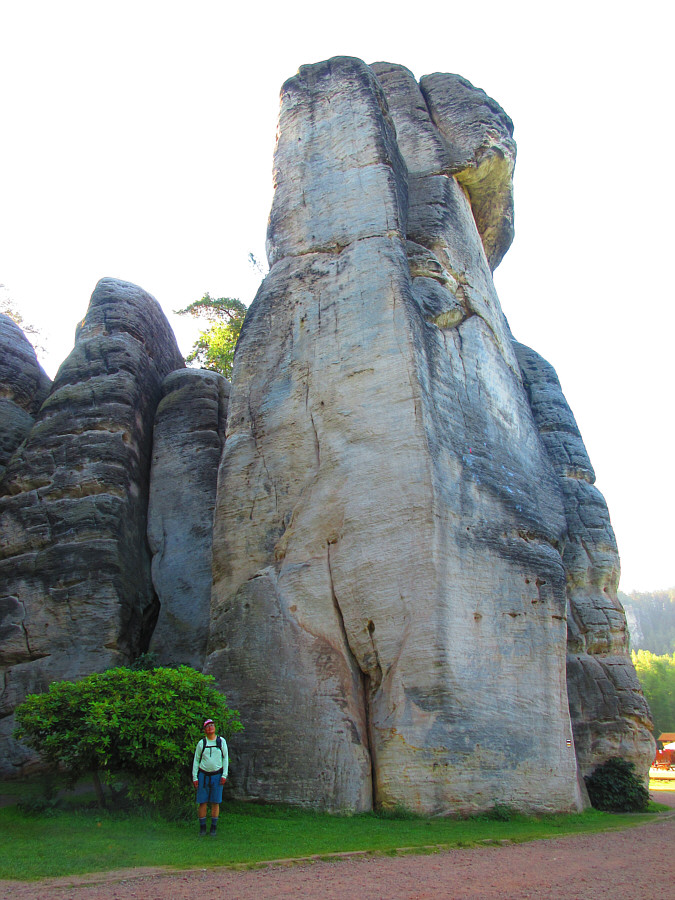
Sonny stands below a teaser rock formation which is outside the entrance to the City of Rocks.
Photo courtesy of Zosia Zgolak
 |
Sonny stands below a teaser rock formation which is outside the entrance to the City of Rocks. Photo courtesy of Zosia Zgolak
|
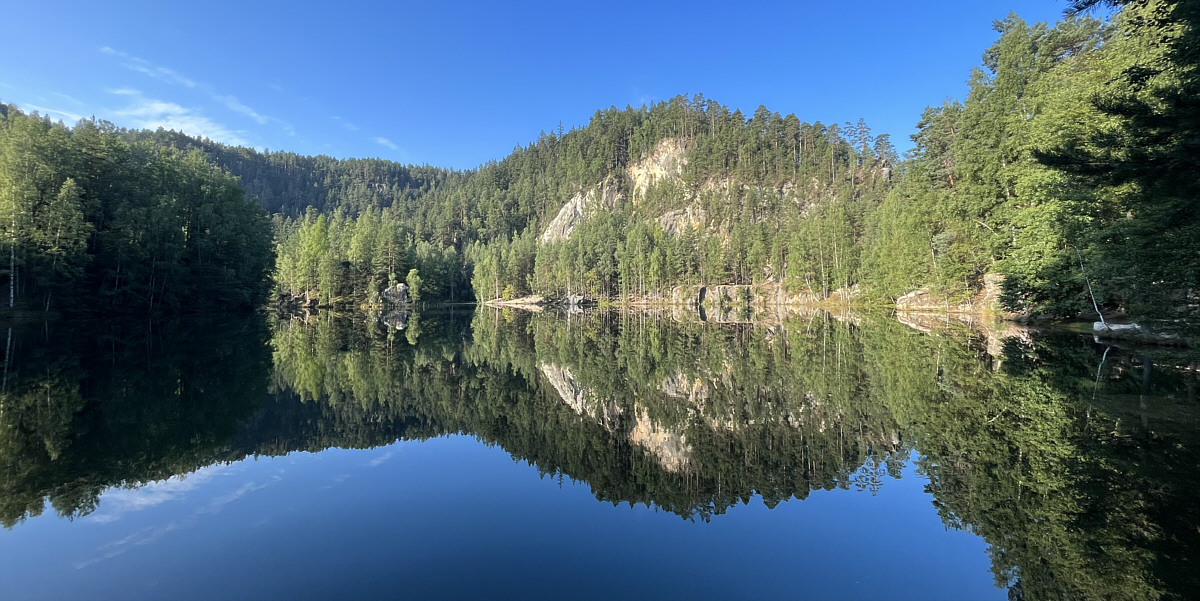
Just past the entrance to the City of Rocks is Piskovna, a former sandstone quarry that was flooded to create the present pond.
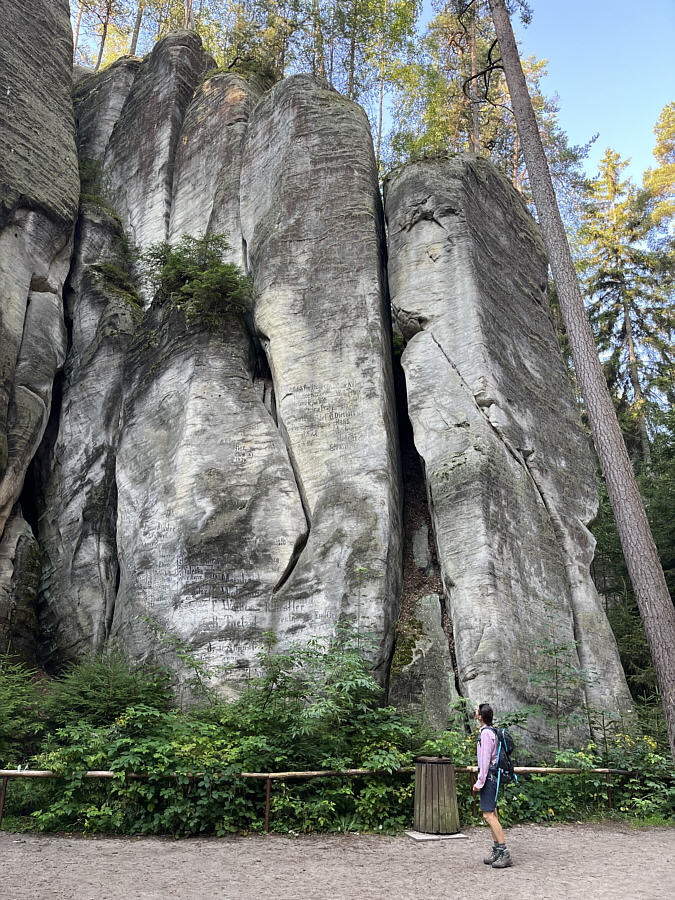 |
Old German inscriptions are carved into some of the rocks. |
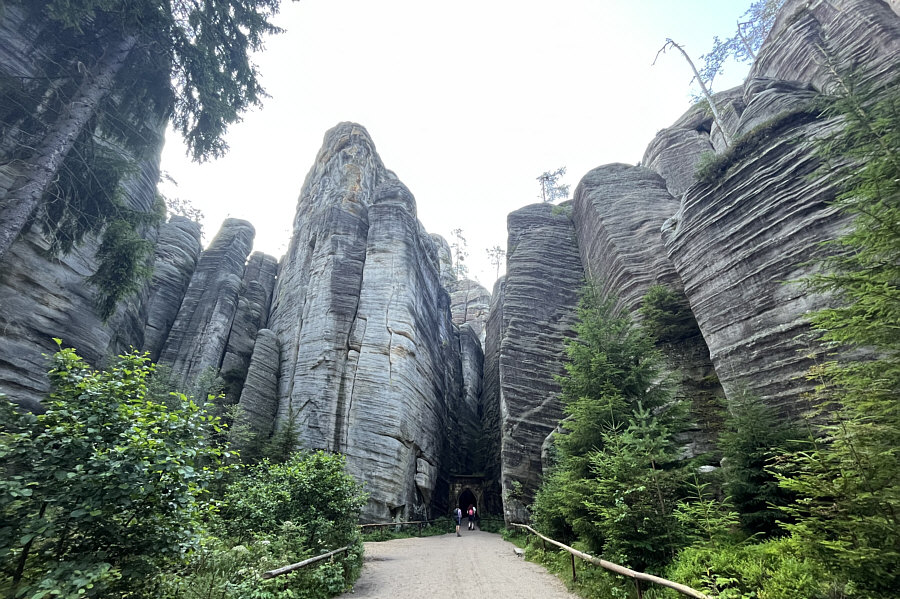 |
City of Rocks is an apt description as many of the rocks here resemble skyscrapers. |
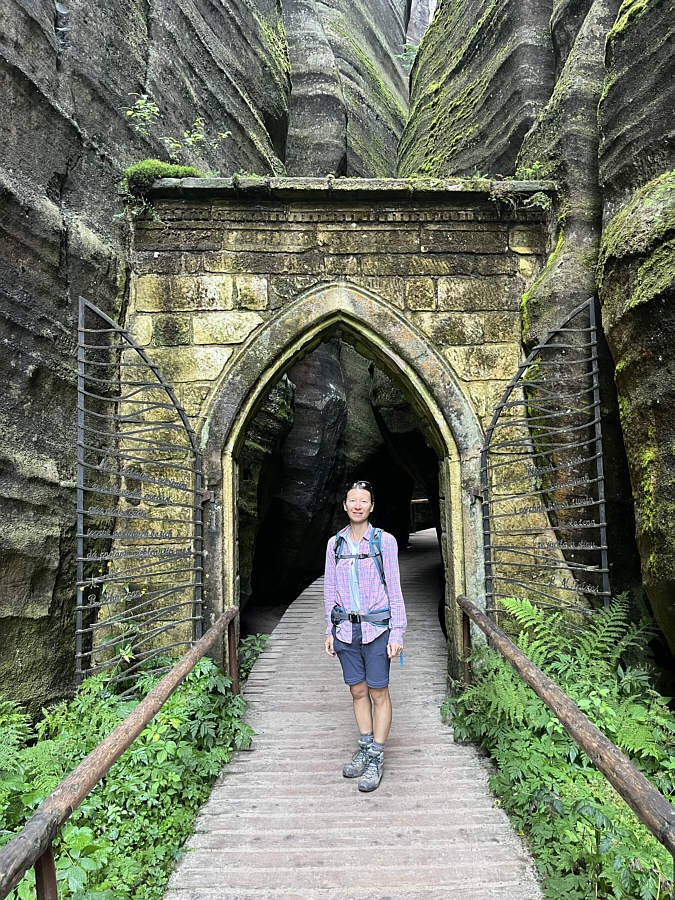 |
The Gothic Gate was built in 1839 and guards the former entrance to the park. |
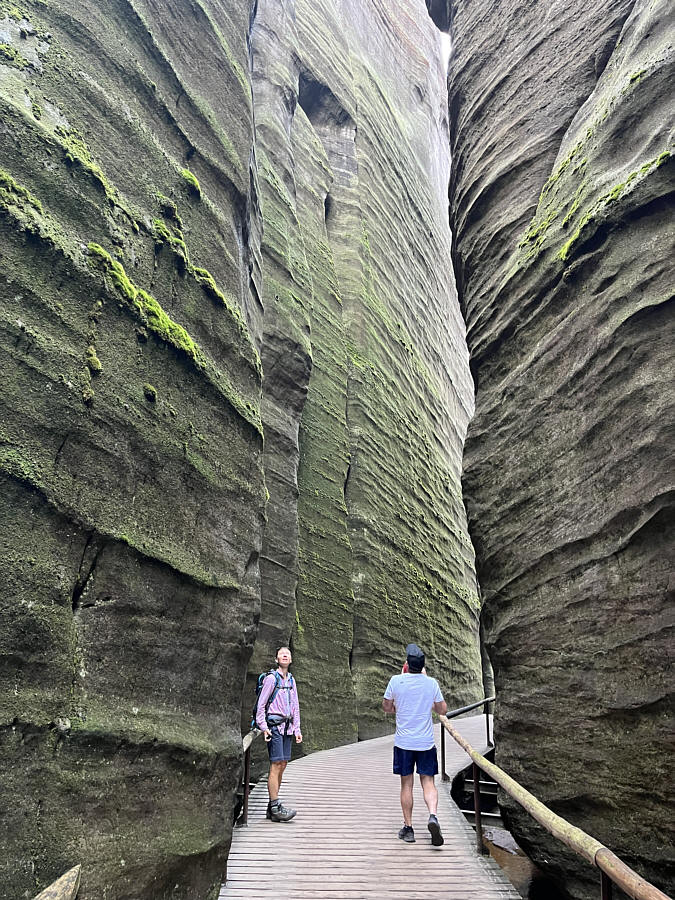 |
Zosia is in awe of the soaring walls in this canyon. |
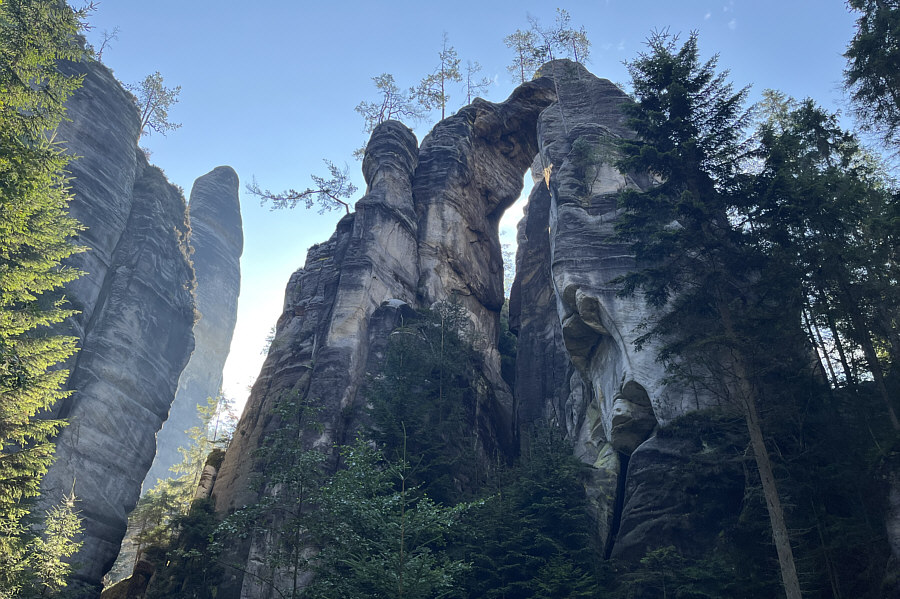 |
This rock formation is called Čertův most (the devil's bridge). |
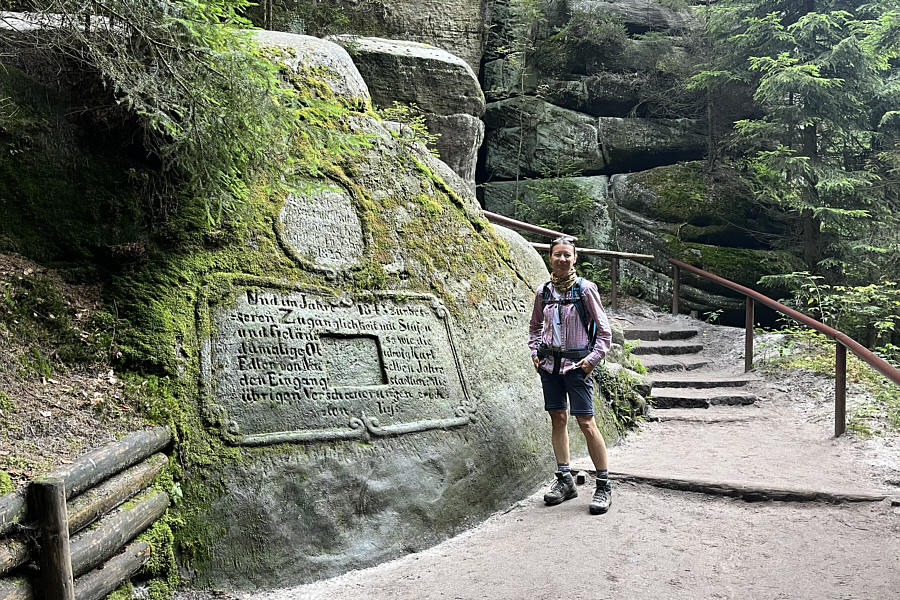 |
The upper inscription dates back to 1820 while the lower one dates back to 1841. |
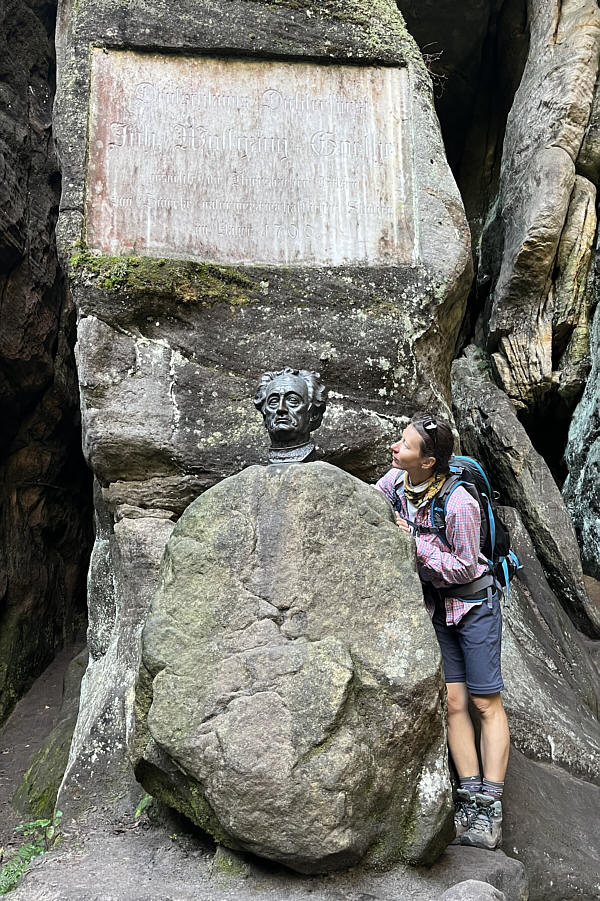 |
The famous German poet, Johann Wolfgang von Goethe, visited the City of Rocks in 1790. |
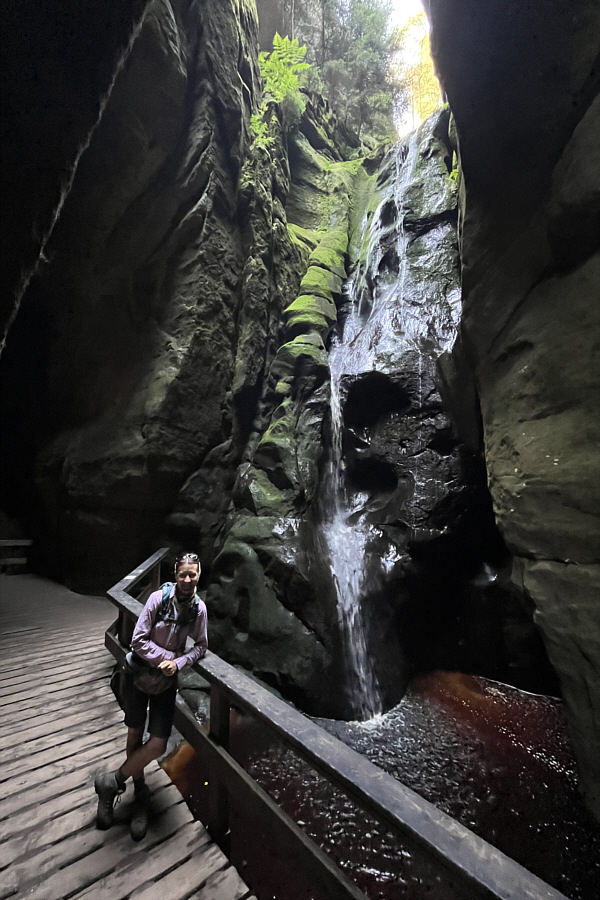 |
The Great Waterfall is about 16 metres high. |
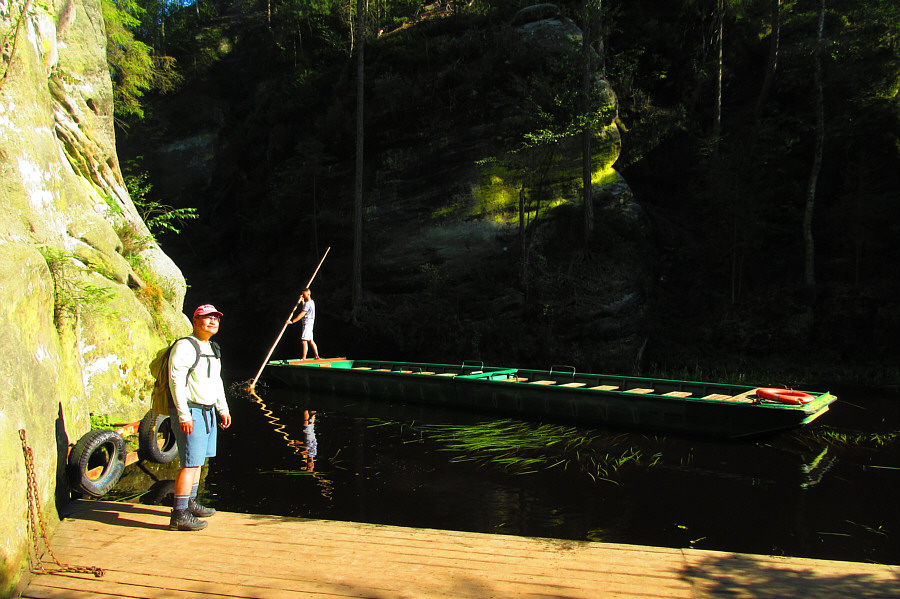 |
Above the Great Waterfall is a narrow
lake where tourists can go for a boat ride. Photo courtesy of Zosia Zgolak |
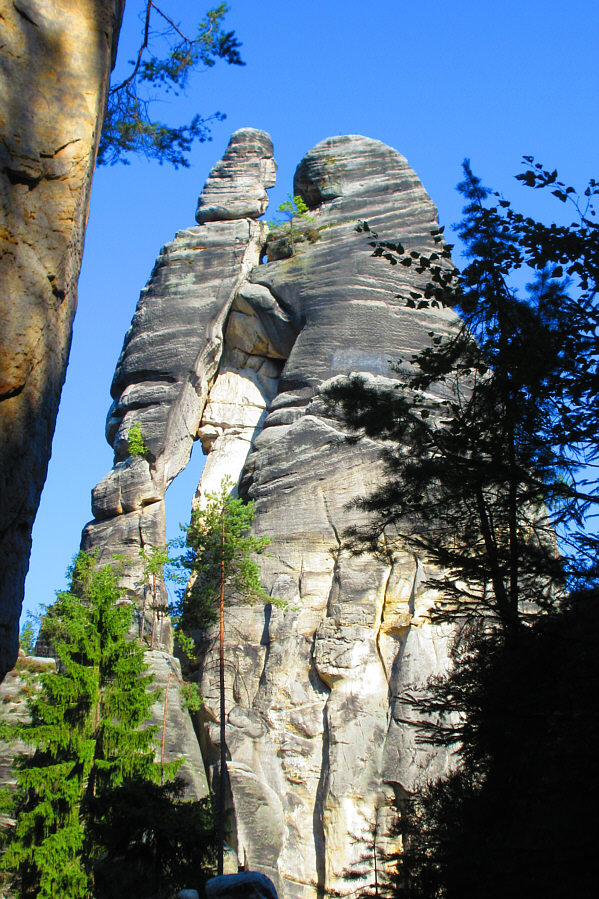 |
Milenci (Lovers) is the highest
rock formation in the park. Photo courtesy of Zosia Zgolak |
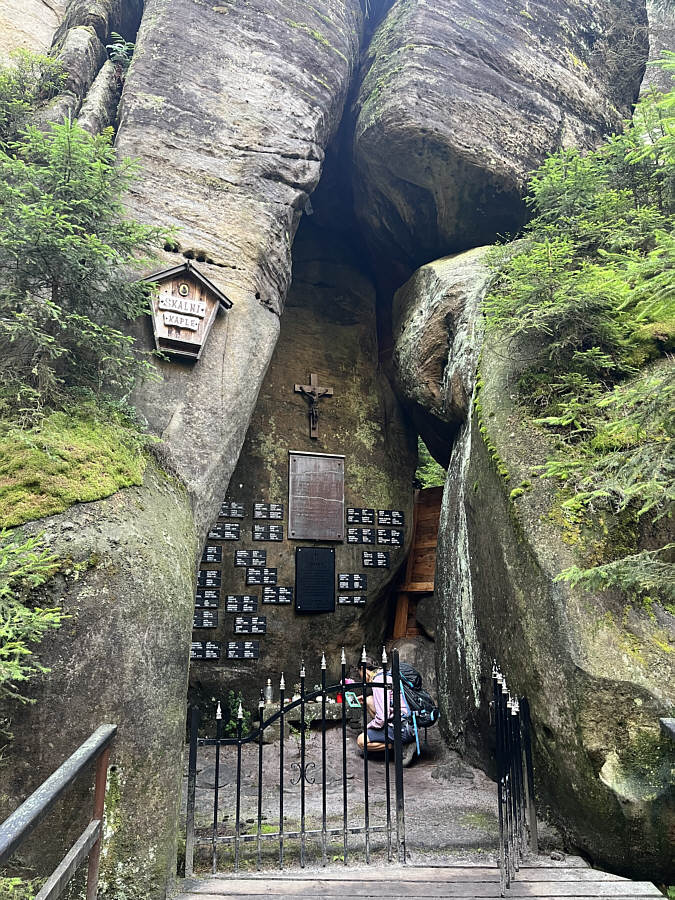 |
Skalni kaple (rock chapel) was built to commemorate Josef Nádherný von Borutín who died while trying to climb Milenci in 1929. The names on the other plaques belong to others who had dedicated themselves to rock climbing in the area. |
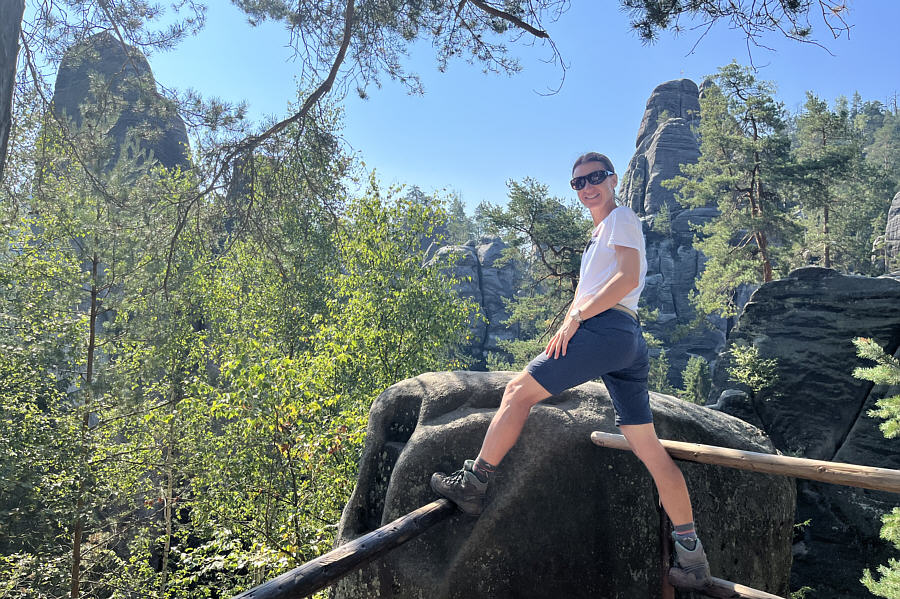 |
Zosia tries to get a better view of Gilotina (guillotine) at far left and Milenci at right from this viewpoint. |
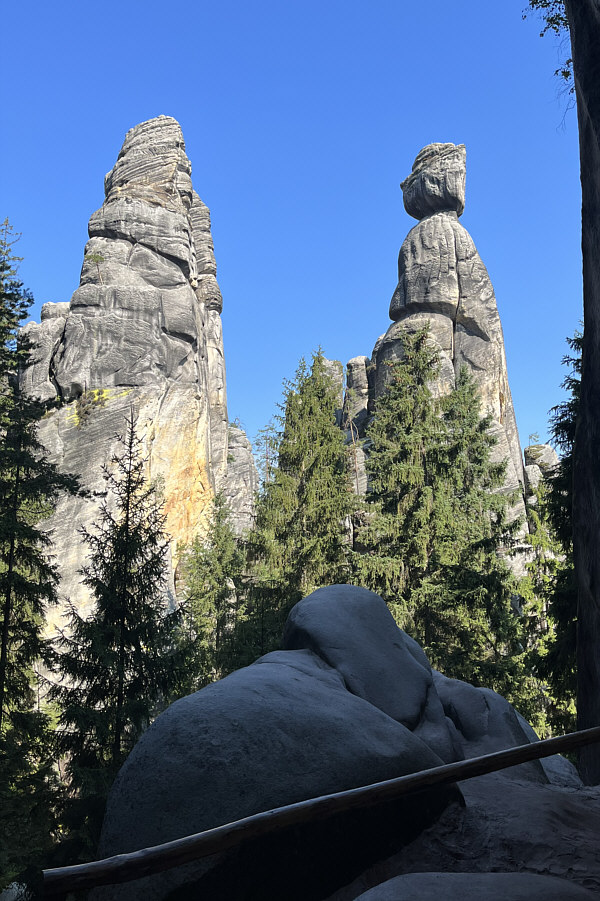 |
These are the Starosta (Mayor) and Starostová (Mayoress). |
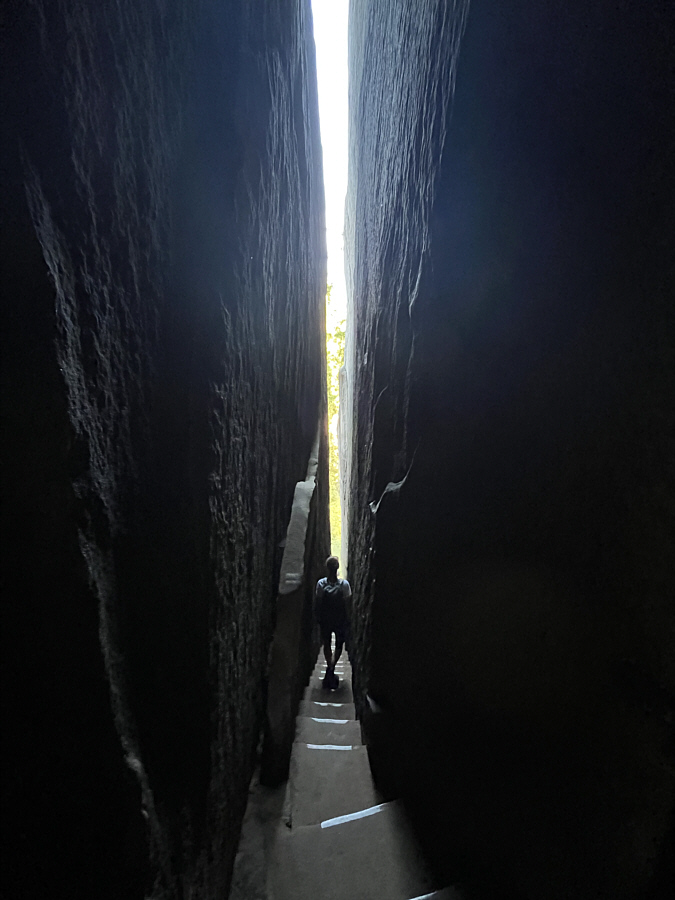 |
Myší díra (Mousehole) is a passageway that narrows to only 50 centimetres wide. |
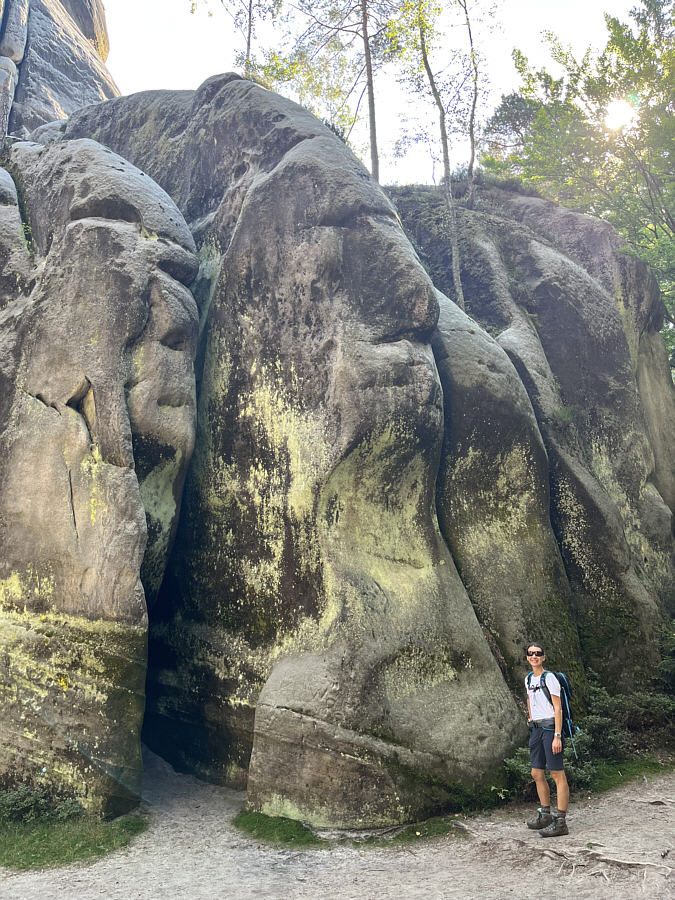 |
The last rock feature on the tour is called Indián (Red indian). |
After our break, Zosia and I wandered around the summit area for a bit before lining up to take the gondola back down to Pec pod Sněžkou. The clouds above the mountain were beginning to look threatening, but admittedly, I was just too lazy to walk back down. For a one-way ride down, Zosia paid 320 CZK (~$19.53 CAD) for each of us, and the descent to the lower gondola station took about 15 minutes. From there, we walked an easy and uneventful two kilometres back to the parkade since the shuttle buses were not running after 3 PM. Ultimately, the predicted thunderstorms did finally materialize but not until much later when we had already checked into our accommodations for the night. I heard emergency sirens wailing in the distance that evening, and the next day, we learned that the thunderstorms had been severe enough to cause some damage in Prague and to also flood the airport in Frankfurt, Germany.
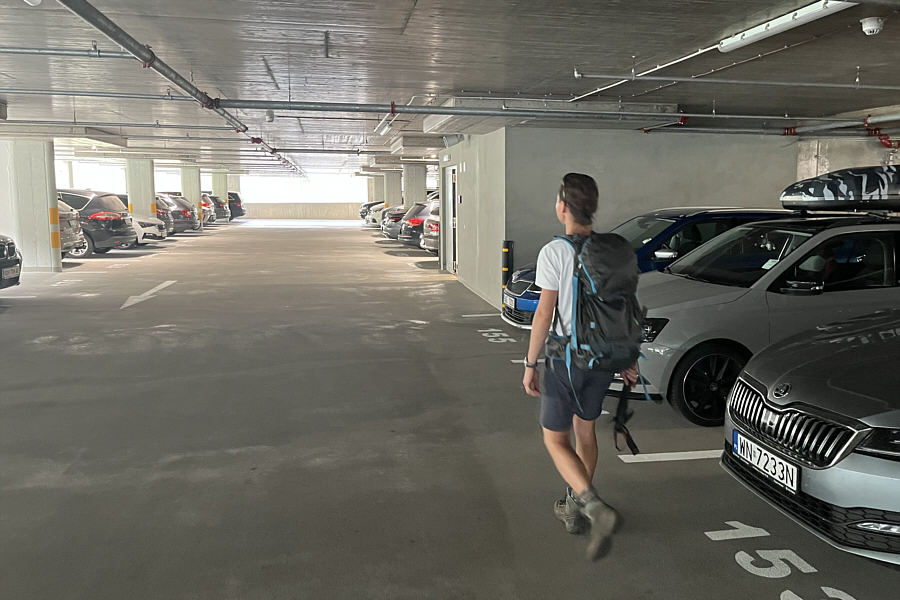 |
Zosia begins the hike to Sněžka from a parkade just outside the town of Pec pod Sněžkou. |
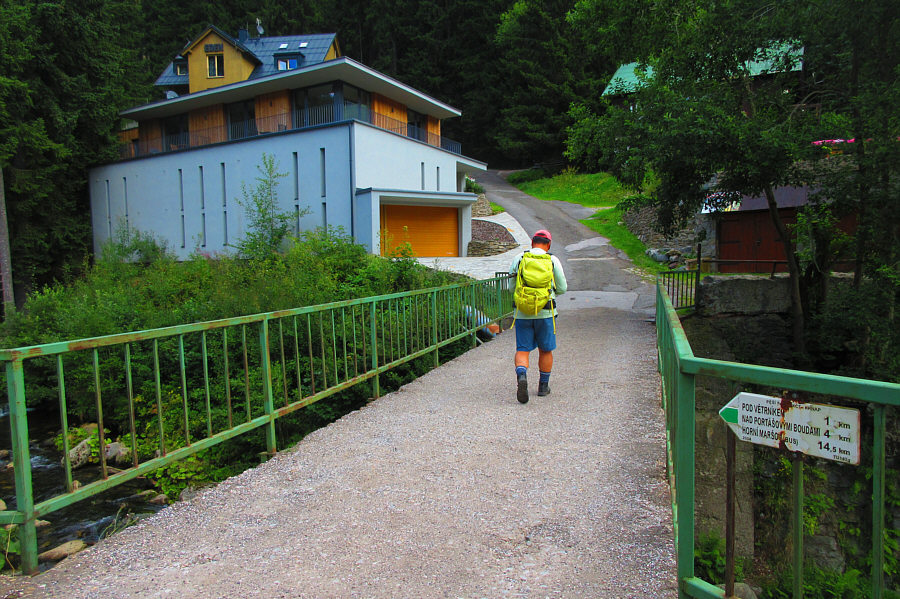 |
Sonny crosses a bridge near the
trailhead. Photo courtesy of Zosia Zgolak |
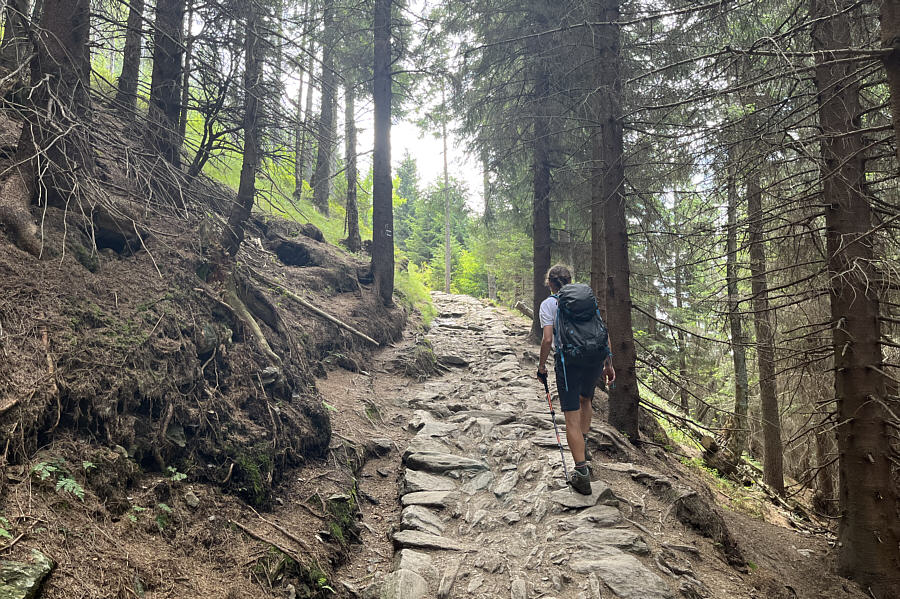 |
The initial section of trail is mostly forested and quiet. |
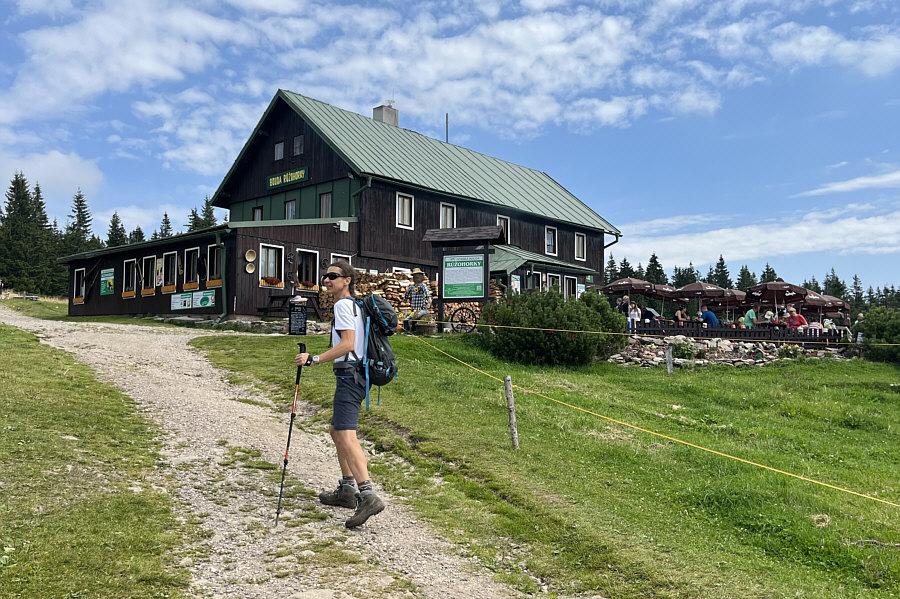 |
Zosia arrives at Horská Bouda Růžohorky, a mid-mountain commercial resort. |
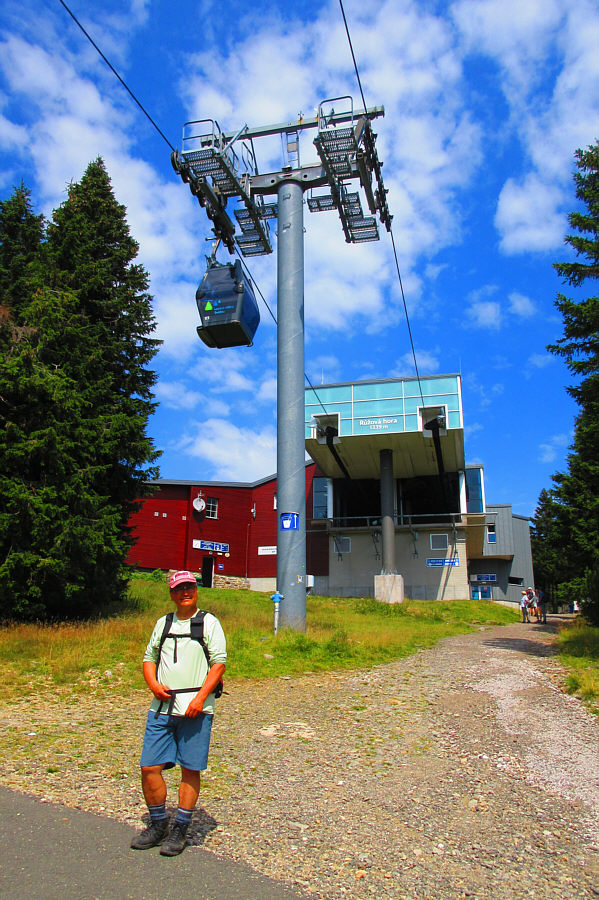 |
Sonny arrives at the mid-mountain gondola station which is named after a nearby named summit, Růžová hora (Rose mountain). Photo courtesy of Zosia Zgolak |
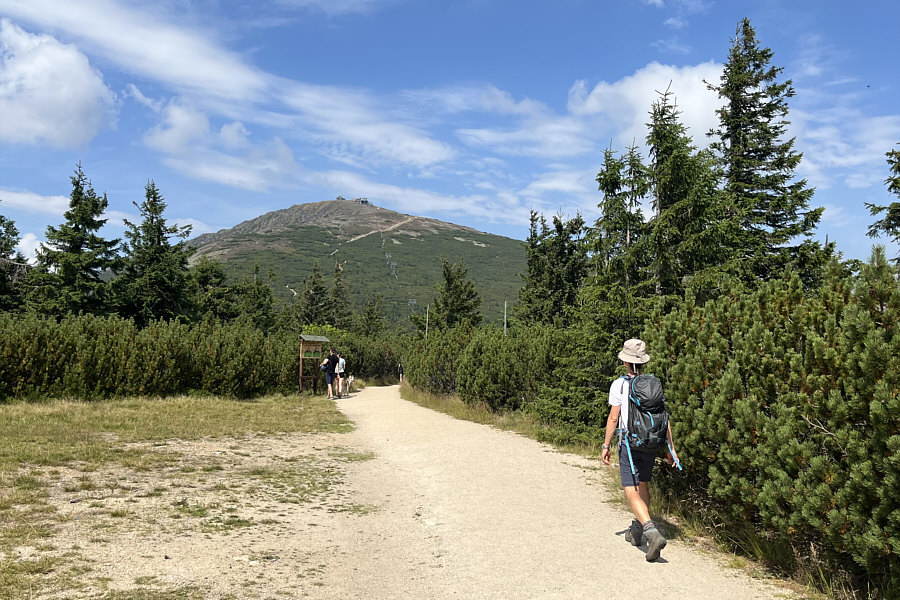 |
Zosia gets her first clear view of the top of Sněžka. |
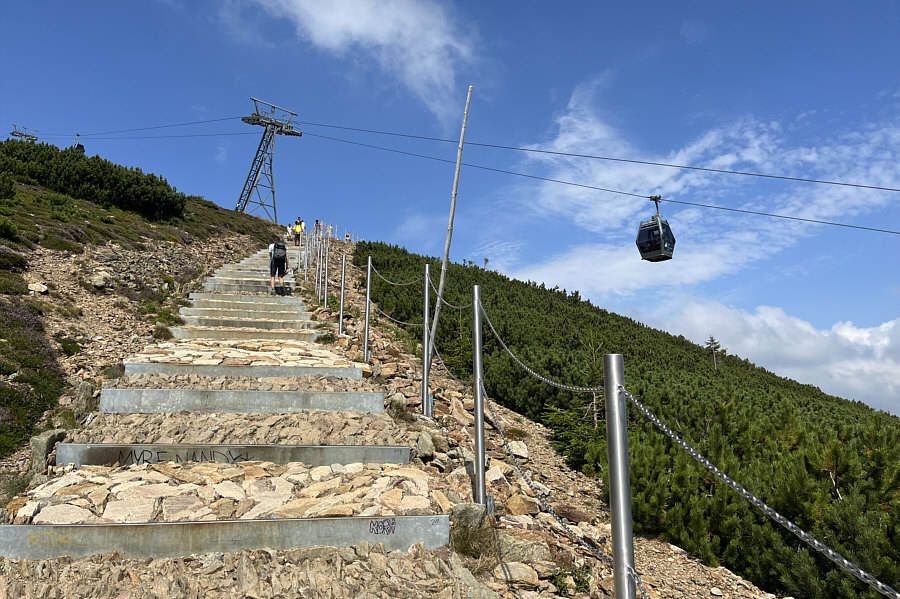 |
Stairs and railings simplify the ascent to the top. |
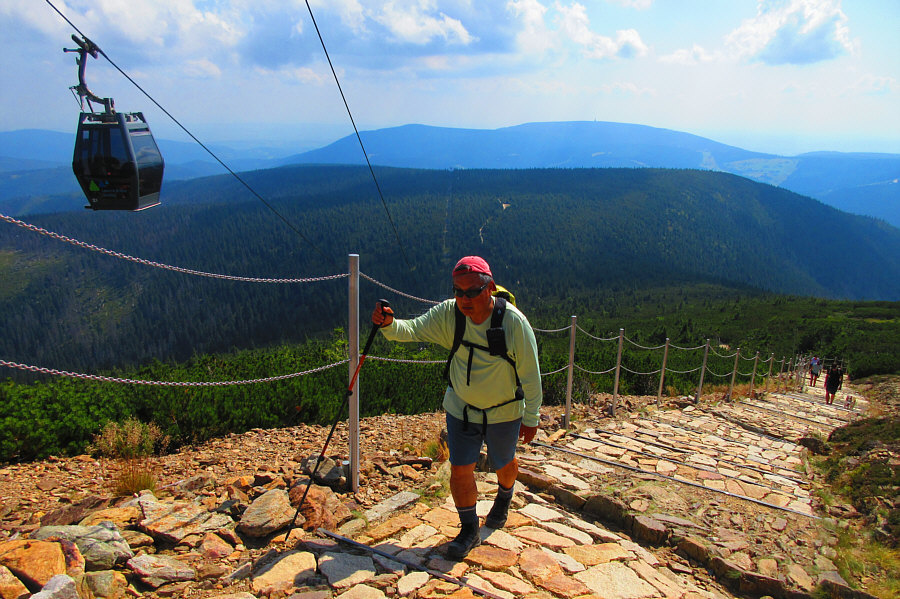 |
In this view to the south, Ružová hora is the forested ridge at right. Photo courtesy of Zosia Zgolak |
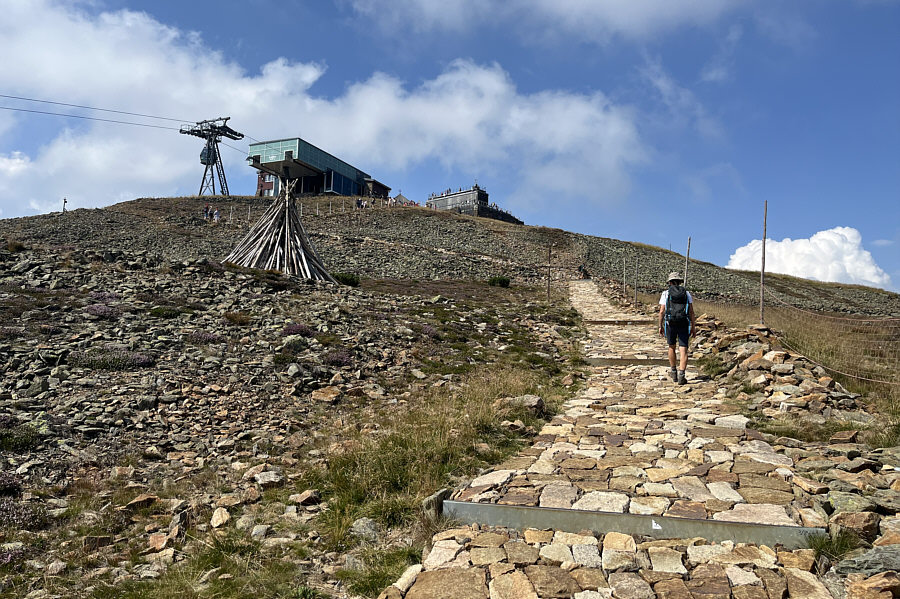 |
Zosia approaches some of the buildings at the summit area. |
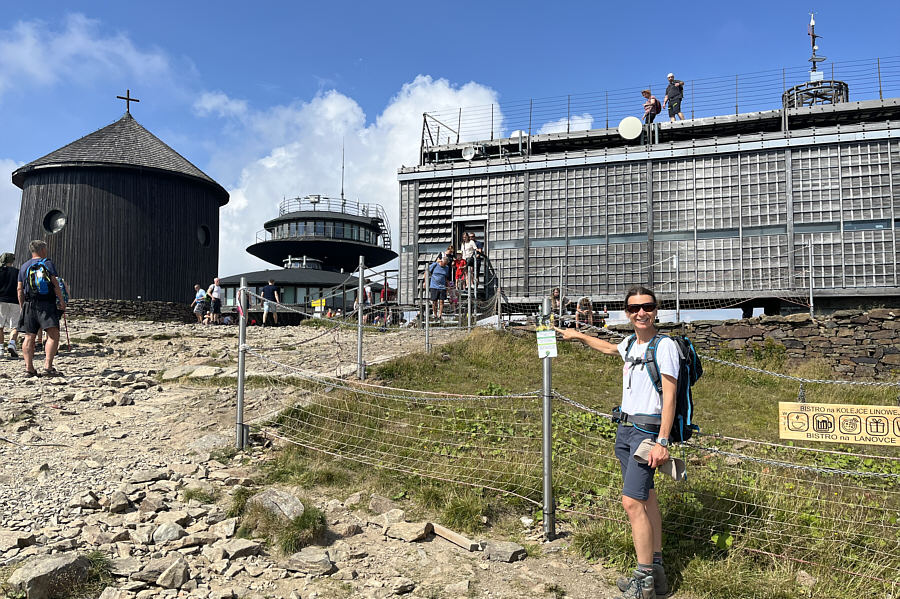 |
This fenced area is designed to protect the daisy-leaved speedwell, a plant that only grows here and nowhere else in the Czech Republic. The building behind Zosia is Poštovna na Sněžce (Sněžka Post Office) which is still on the Czech side of the border. Kaplica św. Wawrzyńca (St. Lawrence's Chapel) and Wysokogórskie Obserwatorium Meteorologiczne (High Mountain Meteorological Observatory) are both on the Polish side of the border. |
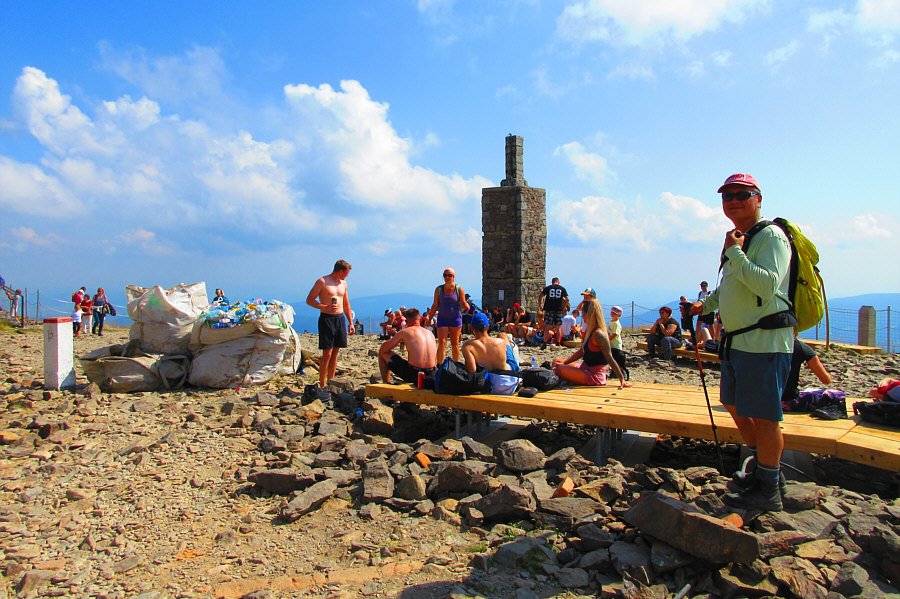 |
Sadly, the summit of Sněžka (1606 metres)
is marked by several huge canvas bags full of discarded plastic
bottles. Photo courtesy of Zosia Zgolak |
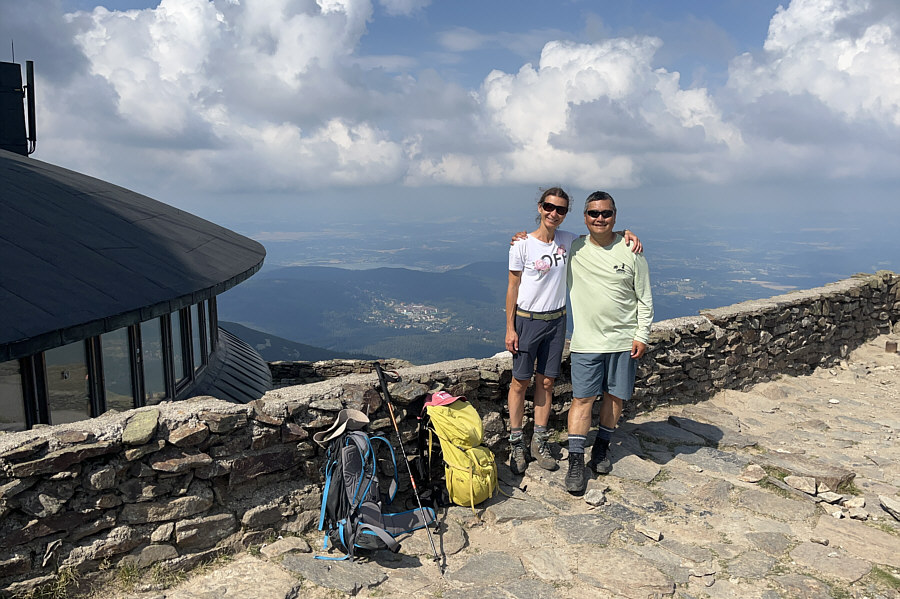 |
Zosia and Sonny pose near the meteorological observatory with views of the Polish landscape to the north. |
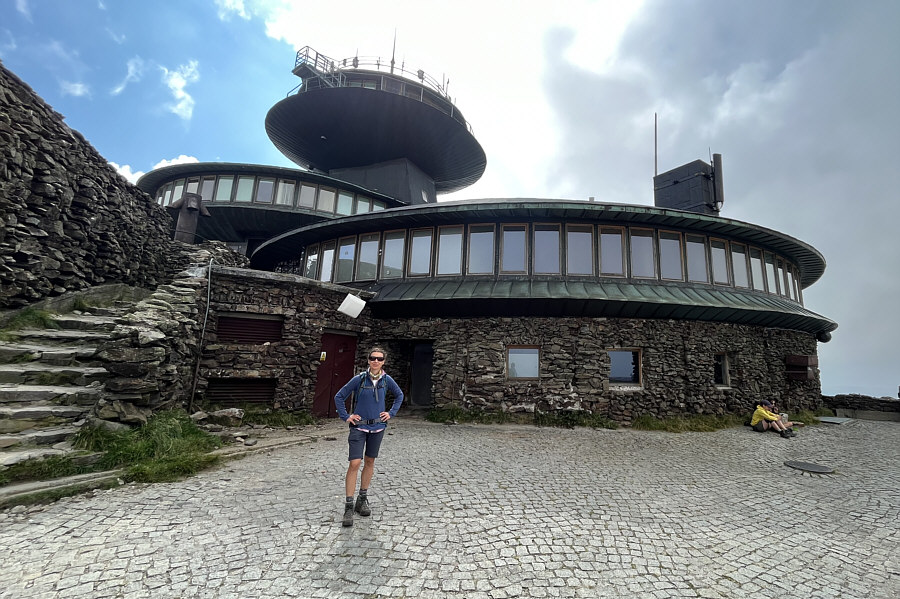 |
Sadly, the meteorological observatory is currently closed to the public due to concerns about its structural integrity. |
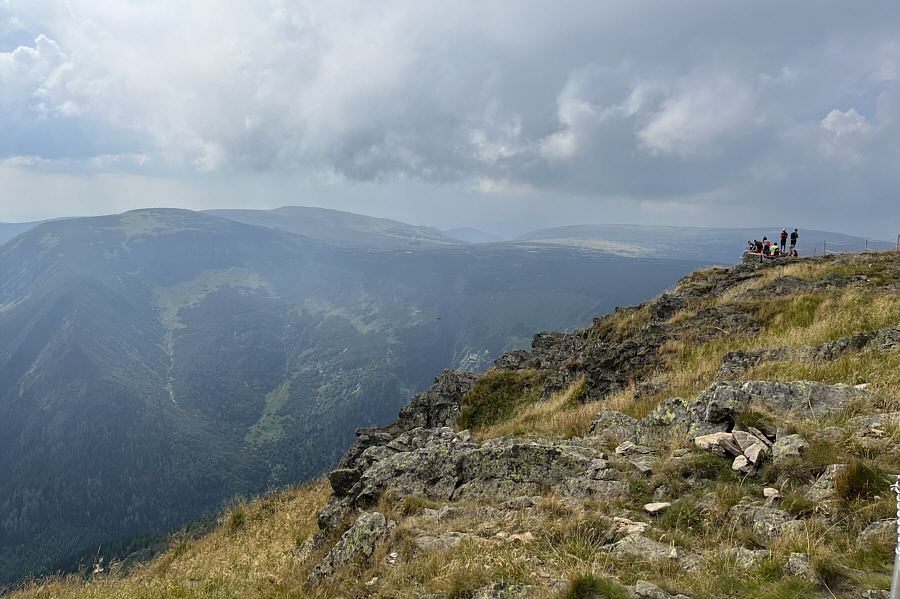 |
Hikers crowd a stony platform near the summit with views to the west. |
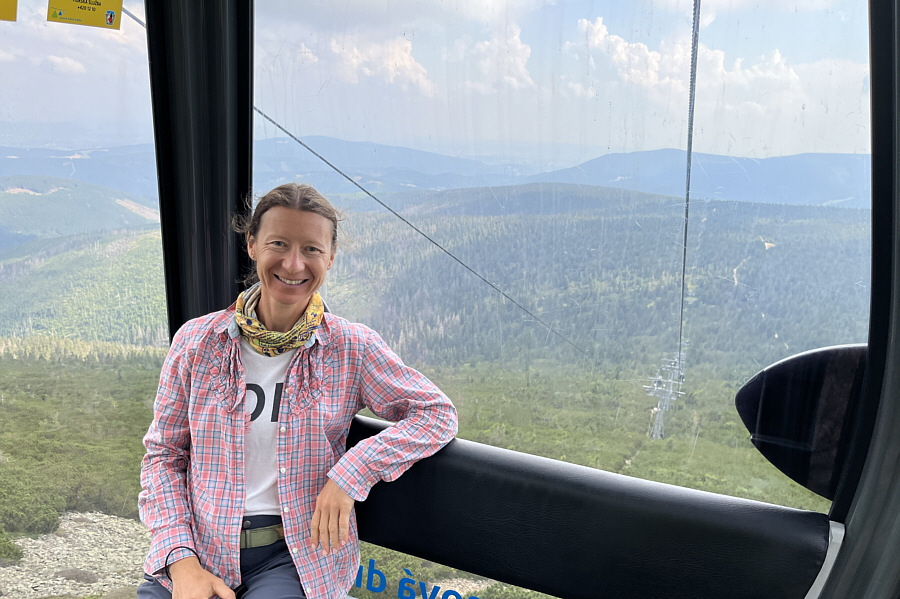 |
Zosia rides the gondola down the mountain. |
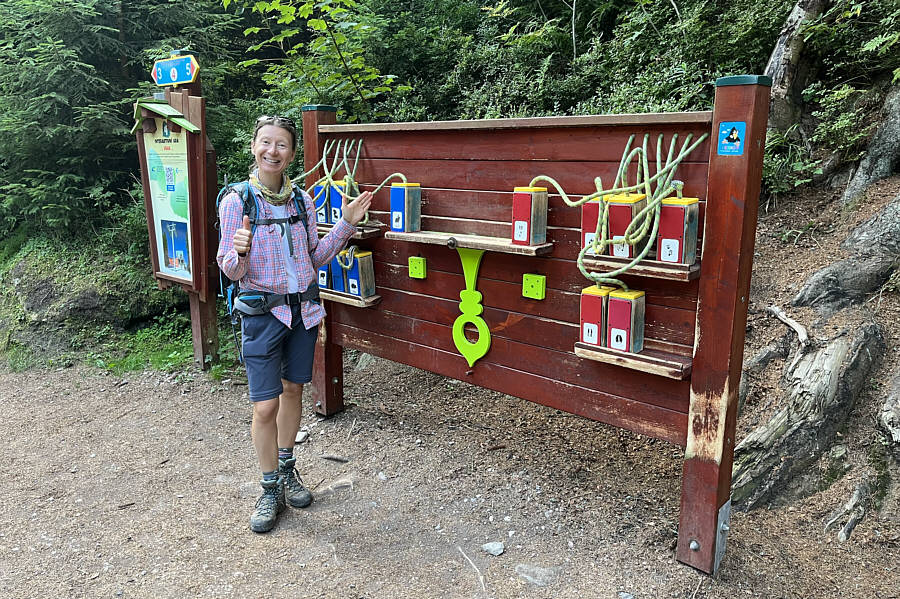 |
Along the trail between the lower gondola station and Pec pod Sněžkou are activity stations such as this one which are apparently geared toward restless or bored children. |
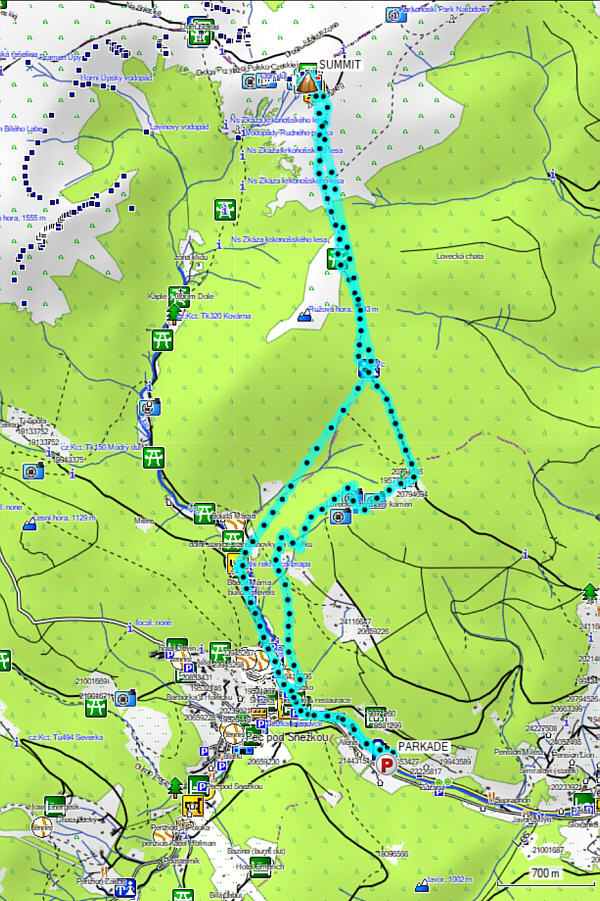 |
Total
Distance: 14.1 kilometres Round-Trip Time: 4 hours 49 minutes Cumulative Elevation Gain: 899 metres |